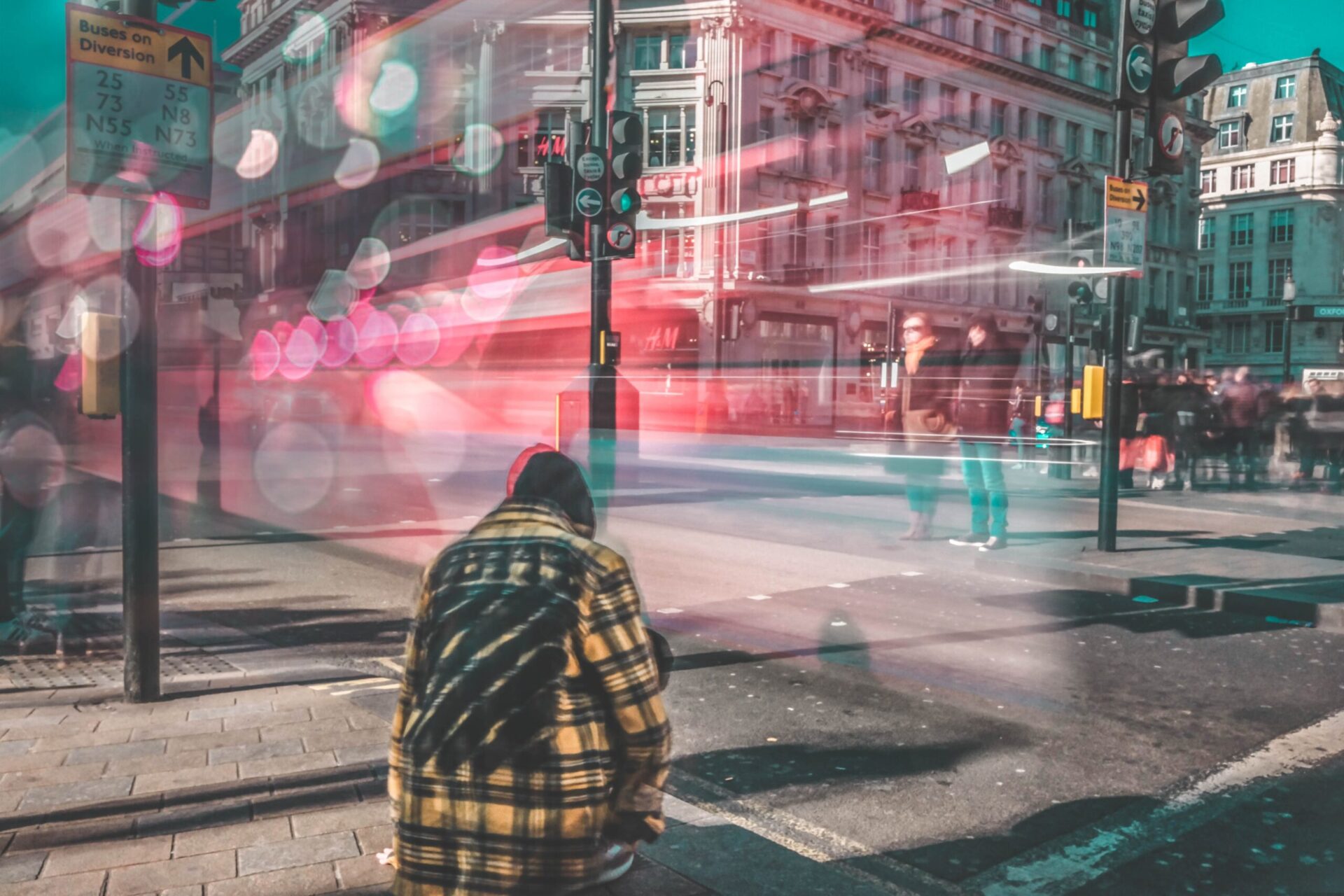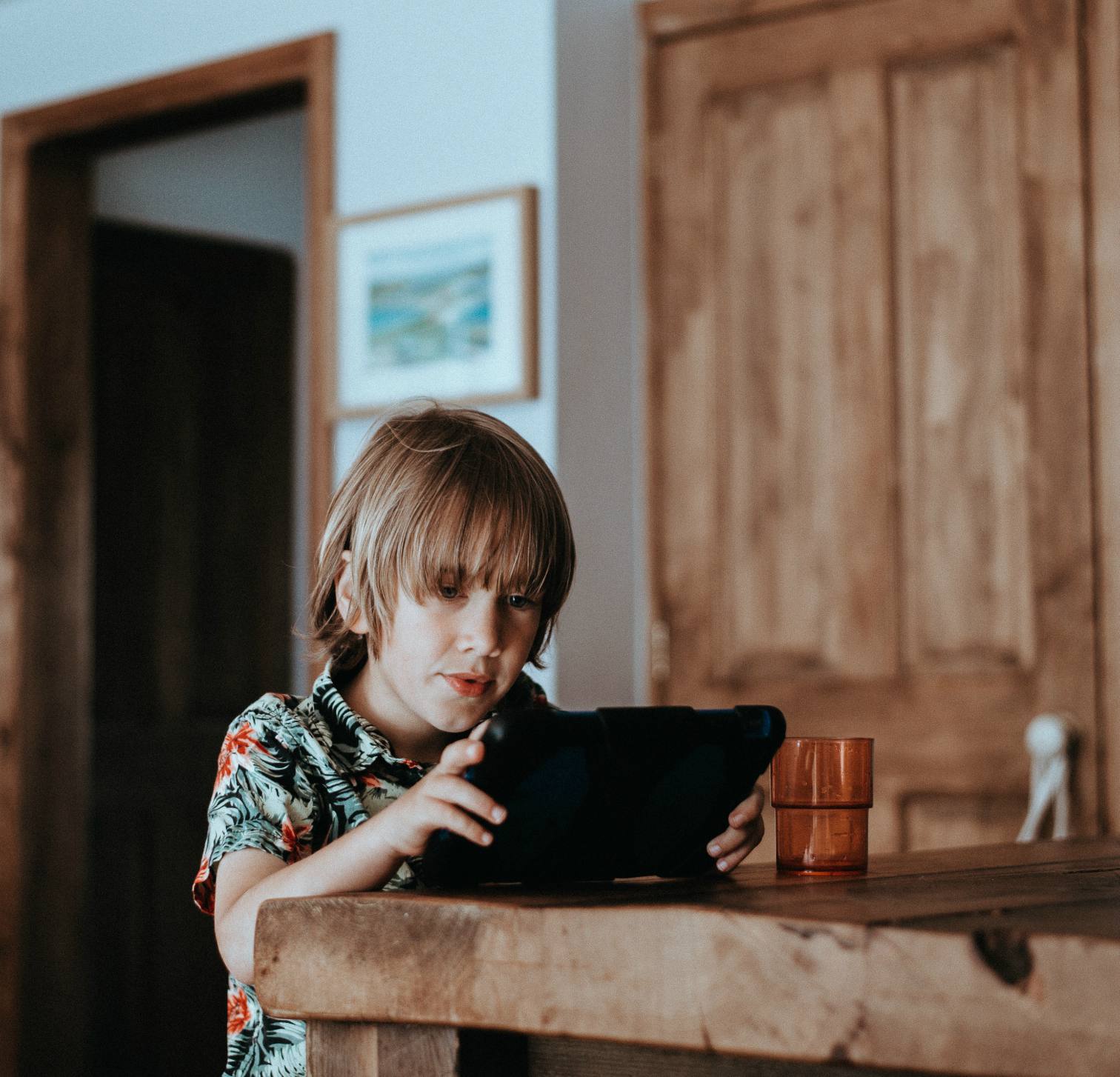This piece was originally published on EPIC Perspectives in 2021.
Sanitization has been a key word during the COVID-19 pandemic. Sanitization not just in terms of cleanliness, but also in terms of the revised interactions people have had with each other and with the environment around them. COVID-19 has created a Sanitized Landscape – supposedly free of germs in the home, cars on the road, and close encounters with other bodies.
As parts of the world slowly prepare for a ‘new normal’ post-pandemic, we propose that a fundamental part of this preparing involves looking not through the lens of a Sanitized Landscape, but a Sensory Landscape. This combines traditional senses of smell, taste, touch, sight, and hearing with metaphysical perception – senses beyond the traditional that help people feel a sense of safety, comfort, connectedness, and well-being.
This shift from a Sanitized to Sensory Landscape makes us excited to start making sense of one big question: In a ‘new normal’ post-pandemic world, what kind of sensory experience(s) will consumers value, and why?
Why a Sensory Landscape?
The pandemic has had a profound impact on people’s senses. Over 50% of those diagnosed with COVID-19 have experienced a loss of smell and taste (Campbell, 2021). In the UK, over 200,000 patients have experienced smell loss, and about half of those affected are still experiencing difficulties two months later (Cox, 2020). Many have been deprived of other important sensory experiences – like the ability to reach out to others and feel a sense of connectedness to the people and things around them that matter. The Well Being Trust estimates that COVID-19’s role in social isolation and economic pressures will contribute up to approximately 150,000 additional deaths (Petterson et al., 2020).
Overall, this experience has created a greater awareness and appreciation of how human senses, both traditional and metaphysical, contribute to the profundity of daily life: from the delectable tastes and smells of a good home-cooked meal, to the joy and comfort of human interaction, to the privilege of being able to fully immerse ourselves in the sensory experiences of different cultures through travel.
Amidst this greater awareness, the shift from a Sanitized to Sensory Landscape becomes an opportunity for brands and people to help make sense of post-pandemic times and have confidence and hope in a ‘new normal’ together.
Making Sense of a Sensory Landscape
The underlying principle of shifting from a Sanitized Landscape to a Sensory Landscape is to shift focus from the things that we have tried to make our environments free of during this period – like cars or germs or even people – to a focus on what we now want them to be filled with. Post-pandemic, people will want more experiences through products, user experiences, or environments (physical, digital, or both) that activate and enliven the senses.
To kickstart this essential thinking around sensemaking in a Sensory Landscape, we need to tap into the traditional and metaphysical domains of sensing. Our provocations are:
- People are developing a renewed appreciation and relationship with their traditional senses. It is therefore paramount that new experiences favor sensorial sensitivity – moving beyond the current paradigm of offering frictionless experiences.
- People are seeking to re-establish a sense of connectedness, comfort, and well-being in a post-pandemic ‘new normal’. It is therefore crucial that new sensory experiences factor in metaphysical perception – taking a systemic view on how people’s traditional senses interact with their surrounding physical and social environments.
Favoring Sensorial Sensitivity
Creating frictionless, end-to-end experiences is often a desired design principle for emerging human interactions in brand activations and retail experiences. However, by aiming for frictionless experiences, we aim for a “free from” narrative – free from hassle, free from pain points – and risk normalizing what are ultimately short-term solutions exacerbated by COVID-19 that do not tackle larger systemic issues. These range from something as ‘simplistic’ as promoting frictionless interactions through touch-free movements, to pushing for frictionless end-to-end patient journeys as a long-term marker of effective and equitable care which may encourage one generalized patient journey rather than a personalized, care-first one (Lafleur, 2018)

In our ‘new normal’, we must realize that experiences are made memorable not by being frictionless, but by their sensorial sensitivity – the ability to sensitively amplify multisensory interactions into desirable and locally contextual experiences.
Brands need to interact more dynamically and holistically with the senses and not rely on a frictionless approach. In our ‘new normal’, brands must realize that experiences are made memorable not by being frictionless, but by their sensorial sensitivity – the ability to sensitively amplify multisensory interactions into desirable experiences.
Favoring sensorial sensitivity also involves adapting sensory experiences to different cultural and social contexts. Researchers led by Professor Asifa Majid (2018) highlighted that whereas English speakers generally conformed to our previously established hierarchy of senses – sight, hearing, touch, taste, and smell – Farsi and Lao speakers in the study were almost perfectly able to talk about and identify tastes, whereas English speakers struggled. In industries where multisensory experiences are still often based on an underlying hierarchy of senses, this has significant implications for how brands create future locally contextual customer engagement strategies.
At Gemic, we’ve integrated the multi-sensorial approach into multiple topics: from aiding caregiver-child bonding and infant development through experiences that go beyond the tactile, to looking at how consumers form “sonic identities” through broader visual and tactile cues. We’ve also started experimenting with presenting our deliverables in new formats – for example, complementing traditional slides and written reports with new “podcast-style” playlists of respondents’ top insights. This also encouraged respondents to think more creatively about how they described their aspirations and motivation – for example, thinking of a sound that encapsulated a sense of achievement for them.
When we observe wider industry developments, we can also see this renewed approach to senses. For example, carmakers are rethinking the soundscapes of cities and cars and their wider multisensory links with the advent of electric vehicles (De La Garza, 2021). What are the embedded cues in city soundscapes that help us navigate them today, within vehicles and on foot? And how might those be replaced in sensor-driven infrastructure? Emerging technologies are facilitating a shift from frictionless to sensorial digital experiences through developments in haptic sensors that allow users to feel different materials such as forest leaves (The Financial, 2021) or corduroy pants (Garun, 2021) on a screen, a welcome departure from glassy and uniform mediated experiences.
Factor in Metaphysical Perception
In advocating for a more dynamic and culturally contextual understanding of the senses, we must also strive to include the sensations beyond the traditional five pillars of sight, hearing, touch, taste, and smell. We often understand how important our senses are by either coming into contact with them – an (un)pleasant voice, scent, texture, taste, view – or by losing them. Yet we also lack understanding of, or ignore, so much in between; for example, how do we experience senses of safety, belonging, or wellbeing?

Just as we are realising how much we rely on our traditional senses, we are also realising how much we are bound by them.
Metaphysical perception, described as the abstract sensing we do beyond the basic five, is defined by their lack of direct contact. Metaphysical perception is how we combine inputs from our physical senses and the surrounding context to inform our rich ‘lived’ experiences. These induced senses are crucial to detecting the emotion that people, places, and practices carry, including a perception of comfort and safety. In our quest to better understand people’s relationship with places, brands, and experiences, we should not only interpret responses from the tangible observations that we make, but also seek to understand people’s metaphysical responses to capture these experiences more holistically.
For brands mulling over how to factor in metaphysical perception into new sensory experiences, new technology is a great realm to contextualize this. In a virtual reality or augmented reality setting where digital and physical objects intertwine, an understanding beyond the visual, aural, and haptic elements becomes integral to spur feelings of reality (and being comfortable with that reality) in simulated environments. Achieving this means going beyond discourses around balancing the physical and digital ratio of interactivity. Instead, we should be thinking about how metaphysical perception and other forms of abductive reasoning are being recalibrated in ‘new’ experiences in these ‘new’ worlds.
Improving our understanding of metaphysical perception, in all realities, is how we can create a more holistic engagement and relationship with the places we live in. As philosopher Thomas Metzinger (2018, pp.10) writes in Frontiers in Robotics and AI, “there are explicit and implicit assumptions about the structure of reality” that are up to us to extract and interpret for informing our relationships with the world, particularly in reference to virtual reality environments. Metzinger also identifies how the phenomenology of ‘presence’ is stronger when one is socially situated, currently captured in the market through the recent boom of investment in social VR applications. This articulates the growing need for fostering a strong perception of ‘presence’ and thus enhanced personal resonance based on one’s sensorial triggers and relational attachments when designing spaces and experiences. Our work in social technology has seen how metaphysical perception facilitates collective pursuits through their role in establishing familiarity, belonging, and community. We identified the crucial role that shared attention plays in supporting online togetherness. For online group achievement, demonstrations of care, both direct and indirect, help build lasting relationships.
Metaphysical perception also allows us to reconsider our changing bodies as well as our changing environments. Interoception – defined as how people’s brains interpret their body’s internal signals, like their digestive or circulatory system – is offering a more holistic understanding of how people construct their sense of well-being (Robson, 2021). At Gemic, our cultural scans have shown how people are increasingly interested in gut-brain links, turning to new practices of cleaning and eating (such as reduced washing, and paying more attention to active cultures in food) to cultivate healthy bacteria in their gut (and skin) microbiome.
Ultimately, factoring metaphysical perception into engagement strategies is crucial because it gets to what a sense of community, belonging and well-being means on a human level. Strategies informed by metaphysical perception allows brands to better understand not just the way people engage with the world around them, but the way people want the world around them to feel and be. We’ve come across these issues in our cultural scans and ethnographies on well-being, such as people creating new ideas of a comfortable home and workplace through breathability. In our work for a leading appliance manufacturer, we also saw a shift in focus from individual to planetary health, signaling an acknowledgement of the invisible dependencies that shape how we gauge healthy societies.
**
The ‘new’ lived experiences of individuals and communities have been irrevocably shaped by COVID-19. The shift towards a Sensory Landscape should encourage brands and companies alike to approach senses not as a diminished means but a means of deep connection to resonate with people particularly through non-traditional ways of sensing and perception. We now, more than ever, need to harness the multi-dimensionality of senses to understand what we want our ‘new normal’ to be ‘filled with’ – from the places we call home, to the places we yearn to leave home for.
References
Images: Photo 1. Liam Sekis, Unsplash; Photo 2. Henry Dick, Unsplash; Photo 3. Kagan Bastimar, Pexels
Campbell, L. (2021). ‘Pleasure ripped out’: the people suffering long-term loss of taste after Covid. The Guardian – 27th January. Last accessed: 20th September 2021
Cox, D. (2021). Anosmia: how Covid brought loss of smell centre stage. The Guardian – 5th December. Last accessed: 20th September 2021
de la Garza, A. (2021). Electric Cars Can Sound Like Anything. That’s a Huge Opportunity to Craft the Soundscape of the Future, Time Magazine – 6th April. Last accessed: 20th September 2021
Garun, N. (2017). Tanvas’ haptic feedback system lets you feel texture on a touchscreen, The Verge – 5th January. Last accessed: 20th September 2021
Lafleur, M. (2018). The End of Patient Centricity. Gemic. Last accessed: 20th September 2021
Majid, A., Roberts, S.G., Cilissen, L., Emmorey, K., Nicodemus, B., O’Grady, L., Woll, B., LeLan. B., de Sousa H., Cansler, B.L., Shayan, S., de Vos, C., Senft, G., Enfield, N. J., Razak, R.A., Fedden, S., Tufvesson, S., Dingemanse, M., Ozturk, O., Brown, P., Hill, C., Le Guen, O., Hirtzel, V., van Gijn, R., Sicoli, M.A., and Levinson, S.C. (2018). Differential coding of perception in the world’s languages, PNAS, 11(45), pp.11369-11376. Last accessed: 20th September 2021
Metzinger, T.K. (2018). Why Is Virtual Reality Interesting for Philosophers? Frontiers in Robotics and AI, 5(101), pp.1-19. Last accessed: 20th September 2021
Patterson, S., Westfall, J.M., and Miller, B.F (2020). Projected deaths of despair from Covid-19, Wellbeing Trust. Last accessed: 20th September 2021
Robson, D. (2021). Interoception: the hidden sense that shapes wellbeing. The Guardian – 15th August. Last accessed: 20th September 2021
The Financial (2021). Haptic Tech Turns Phones into Multi-Sensory Nature Learning Tools. The Financial – 2nd June. Last accessed: 20th September 2021
























